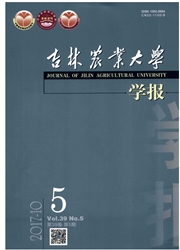

 中文摘要:
中文摘要:
松嫩平原地处吉林省西北部和黑龙江省西南部,是由松花江和嫩江形成的冲积平原。盐土、碱土及盐碱化草甸土是松嫩平原盐碱地的主要构成土壤,总面积约300万hm^2,是该区最具开发潜力的土壤资源。科研和生产实践证明,种稻是本区盐碱土改良利用的最有效途径之一,也是促进农民增收、农业增效及改善生态环境的最佳途径。但这一措施,涉及到许多特殊土壤改良学理论和技术问题。文中从盐碱地种稻是否会加剧土壤次生盐渍化、种稻对生态环境的影响、盐碱土的微域性、盐碱危害、土壤胶体高度分散以及"淡化表层"的建立与肥力培育等方面论述了盐碱地种稻开发过程中必须正确认识和把握的理论与技术问题。
 英文摘要:
英文摘要:
Songnen plain is alluvial plain originating from Songhua River and Nenjiang River in Northwest Jilin province and Southwest Heilongjiang province. Saline soil, alkaline soil and saline-alkali meadow soil are the primary constitutions in saline-alkali land of Songnen plain with a total area of 3 × 10^6 hm^2, and they are considered to be the most potential soil resources. Research and practice showed that plant- ing paddy on saline-alkali land is one of the best ways to improve saline-alkali soil, and a best way to ira- prove farmers' earnings, agricultural benefit and ecological environment. But this lated to a number of specific soil improvement theories and technical issues. Through the serial discus-sions of soil secondary salinization, ecological environment, micro-domain of saline-alkali soil, harm of salinization, highly dispersed soil colloids, establishment of "desalinated surface" and nurturing of fertili-ty, this study proved that a correct understanding and managing of the theoretical and technical problems is quite necessary and important during paddy planting in saline-alkali land.
 同期刊论文项目
同期刊论文项目
 同项目期刊论文
同项目期刊论文
 期刊信息
期刊信息
